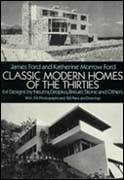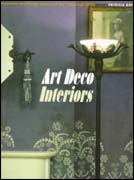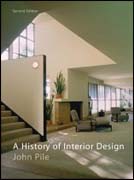|
Period Style Homes: 1920 - 1930's
House
|
|||||||||||||||||||||||||||
|
Two distinct styles developed. The traditional choice had evolved from the earlier Arts & Crafts era of romance and decoration. Mock Tudor Houses and Cottage Style homes were the most common to appear in suburban developments. Houses were a mix of red brick, pebbledash and half timbering with red clay tile roofs and tile hung walls. Other features included leaded glass in iron casement windows set in wood, heavy oak doors with iron nails and fittings - all reminiscing from Jacobean and Tudor times. The modern approach was to reject all decoration and to go for a clean cut simple design. The Bauhaus style from Europe was influencing a house style that was plain and stream-lined. Moderne homes were about functionability. Roofs were flat and walls were painted concrete, windows were large and plain.
"Government statistics show that almost three million homes were built in Britain in the 1930s. The construction frenzy peaked in 1936 when builders put the finishing touches to 370,000 houses, more than double the number built in 2006. Wealth and improved transport links enabled a burgeoning middle class to leave crowded inner cities for space and peace in the suburbs." Times Online Interiors With mortgages becoming more accessible and affordable, the average married couple could buy their dream home. With the introduction of hire-purchase schemes heavily marketed by retail firms, the low income family could now purchase all the domestic products they needed. Craftsmanship gave way to mass produced items. Furniture once made by a carpenter was replaced by machine made products. Consumers were bombarded with advertising to buy all the latest technologies - wireless radios, plumbed in washing machines were all on the young couple's wish list. "Between 1924-35 there was a growth of the furniture industry by some 91.1 per cent." Professor Peter Scott University of Reading Business School 2007 The Daily Mail Newspaper sponsored the annual Ideal Home Exhibition which showed all the latest household appliances and designs. "Middle-class housewives, whose budgets could not accommodate the increase in the cost of domestic help, would be more likely to purchase appliances to ease their own workload than wealthy woman who would probably purchase appliances for their servants to use." The Allure of the Household Appliances in the 1920's by Loretta Lorance
Traditional Style The traditional homemaker would be able to buy affordable oak furniture that recreated a Jacobean, Tudor or Georgian style. Lifestyle Magazine such as Good Housekeeping showed the latest home styles. These new and influential magazines encouraged the lady of the house to keep up with the 'Jones' and the man to use his spare time on DIY projects. Furniture would often be large, boxy geometric shapes. English Oak was popular but because of a shortage of wood, veneer and decorated plywood was greatly used. The living room would often be carpeted. In larger homes halls may have had panelled walls and parquet floors. In kitchens they would have used linoleum or quarry tiles for the floor and plywood and melomine for the units. The bedroom more often of had fitted furniture, dark varnished floorboards and an electric fire. Downstairs coal fireplaces were fitted with an oak or tiled surround. The sun rising pattern was often found repeated in stained glass in doors and windows.
Modern Movement Those who followed the "Modern Movement" choose new materials like tubular steel, plastics and veneered woods. Hollywood and Jazz had a major influence on the Moderne styles. A demand for bungalows seen in American films was met by builders and furniture reflected the glamour from Hollywood. The Modern Movement rejected traditional dark interiors and instead used stark clean lines and bright light colours. Large curved sun-trap windows allowed as much sunlight as possible to enter the house. "Think in terms of geometric forms, especially curves; think of between-the-Wars semis, with their curved �suntrap' metal windows and strong horizontal emphasis. Metal use in curved form goes back to the liners that in the 1920s and 1930s plied the North Atlantic trade route. Metal was also a key ingredient of reinforced concrete, the chosen material for flat roofs and sun decks." Homebuilding Magazine Art Deco was one of the most dominant styles of the 1920's & 30's. It started as a high art luxurious style but soon became mass produced. Art Deco is often recognised by its repetitive use of zigzags, fan and chevron motifs. Furniture shapes were influenced by industry and technology. "Furniture began to imitate architecture of the time. The most popular form to emulate were sky scrapers. Upholstered furniture took on a chunky boxy form, often with rounded edges." Professor Linda Nelson Johnson Strong geometric patterns could be found on soft furnishings, wallpapers and home ware. Clarice Cliff ceramics is an example of a popular home ware that used patterns of diamonds and triangles in bold contrasting colours.
...the suburban
developments of the 1920s and 1930s were large scale enterprises by
well-organised firms. Materials were delivered by convoys of lorries
and estates were developed over 5 to 8 years. The improved efficiency
of technique was reflected in firms like John Laing who could construct
a house on the Queensbury Estate in 1934 from start to completion in
only 4 months. Moreover, the impact of town planning - the garden suburb
movement in particular - influenced lower densities, narrower roads,
open space and gaps between buildings, essential ingredients of the
193Os suburbs. Brent
Council
Links for 1920's & 1930's Home History of the English House: Homeowner Sales What is the style of the 1920s and 1930s? By Sacha Markin Design Styles- Architecture, interiors and furnishings: Dezignare Traditional Home English Heritage: Labour of Love Moderne Home History of the Modern Movement in Architecture: Borough of Spelthorne The twenties and thirties: Seaside architecture The Modern House Estate Agents: Stillness Art Deco Dining Room Furniture: Love to know A journey through the history of visionary architecture - Youtube
History of House Design The Traditional House Under Threat? English Architecture: Britain Express Looking at Buildings: Pevsner Architectural Guides Forum Debates
|
|||||||||||||||||||||||||||















